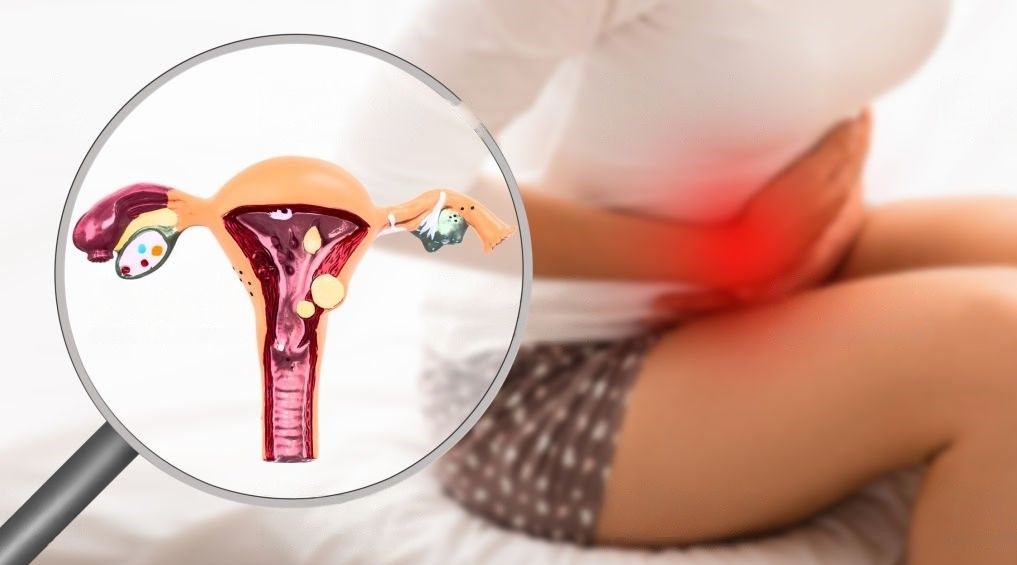Simple Diet Tips for Managing Endometriosis Symptoms

Endometriosis is a chronic condition that affects millions of women worldwide. The pain, inflammation, and discomfort associated with endometriosis can significantly impact daily life. While medical treatments play a crucial role in managing the condition, dietary choices can also play a part in alleviating symptoms and improving overall well-being. In this blog, we will explore practical and science-backed Indian diet tips that can help individuals manage endometriosis symptoms more effectively.
Understanding Endometriosis
Before diving into the dietary recommendations, let's briefly understand what endometriosis is. It involves the growth of tissue similar to the lining of the uterus outside the uterus. This tissue can cause inflammation, pain, and the formation of scar tissue. Hormonal imbalances, genetics, and immune system dysfunction are believed to contribute to the development of endometriosis.
Indian Diet Tips for Managing Endometriosis Symptoms
1. Incorporate Anti-Inflammatory Spices
Indian cuisine is rich in spices that offer anti-inflammatory properties. Turmeric, for instance, contains curcumin, a compound with potent anti-inflammatory effects. Curcumin can help alleviate inflammation and reduce pain associated with endometriosis. Other spices like ginger, cinnamon, and garlic also possess anti-inflammatory properties that can support symptom management.
2. Opt for Whole Grains
Whole grains are a staple in Indian diets and are beneficial for managing endometriosis symptoms. They are high in dietary fiber, which aids in digestion and supports hormonal balance. Fiber helps eliminate excess estrogen from the body, which is crucial because high estrogen levels can exacerbate endometriosis symptoms. Brown rice, whole wheat, and millets are excellent choices.
3. Embrace Plant-Based Proteins
Plant-based proteins like lentils, chickpeas, and beans are not only rich in protein but also contain phytoestrogens. Phytoestrogens are plant compounds that can help regulate estrogen levels in the body, potentially reducing the impact of estrogen on endometriosis symptoms. These proteins also provide essential nutrients without the saturated fats found in some animal-based proteins.
4. Include Colorful Vegetables
Colorful vegetables like spinach, carrots, bell peppers, and tomatoes are packed with antioxidants and vitamins. Antioxidants help combat oxidative stress and inflammation in the body. They also support the immune system and overall well-being. Including a variety of colorful vegetables in your diet ensures a diverse range of nutrients that can contribute to symptom relief.
5. Hydrate with Herbal Teas
Herbal teas like ginger, fenugreek, and tulsi (holy basil) are commonly consumed in Indian households and offer potential benefits for managing endometriosis symptoms. Ginger, for example, has anti-inflammatory properties and can help alleviate menstrual pain. Fenugreek has been associated with hormonal balance, and tulsi possesses antioxidant and anti-inflammatory effects. These teas not only hydrate but also provide comfort and potential relief.
SUMMARY
While dietary changes alone cannot cure endometriosis, they can certainly complement medical treatments and contribute to symptom relief. Incorporating anti-inflammatory spices, whole grains, plant-based proteins, colorful vegetables, and hydrating herbal teas from the Indian diet can create a holistic approach to managing endometriosis symptoms. It's important to remember that individual responses may vary, so consulting a healthcare professional before making significant dietary changes is recommended.
Jayti Shah is a Clinical Nutritionist with a master's degree in Clinical Nutrition and Dietetics. She is a member of the Indian Dietetic Association (IDA). Over the last 9 years, she has helped 400 clients in their clinical and weight loss journeys. She works with SocialBoat as a nutrition consultant.
At SocialBoat, we offer custom diet plans and guided workouts to help you achieve your goals in a 360-degree approach. Our gamified experience ensures that you don’t find workouts boring and we reward you for being consistent with your efforts.

REFERENCES
- Giudice, L. C., & Kao, L. C. (2004). Endometriosis. The Lancet, 364(9447), 1789-1799.
- Gupta, S. C., Patchva, S., & Aggarwal, B. B. (2013). Therapeutic Roles of Curcumin: Lessons Learned from Clinical Trials. The AAPS Journal, 15(1), 195–218.
- Rezende, M. L., Cunha, S. P., Ferraz, Á. A., & Pereira, L. M. (2018). Gastrointestinal symptoms in endometriosis: a systematic review. Revista da Associação Médica Brasileira, 64(11), 1006-1012.
- Patisaul, H. B., Jefferson, W. (2010). The pros and cons of phytoestrogens. Frontiers in Neuroendocrinology, 31(4), 400-419.
- Serafini, M., Peluso, I., & Raguzzini, A. (2010). Flavonoids as anti-inflammatory agents. Proceedings of the Nutrition Society, 69(3), 273-278.
- Agarwal, A., & Gupta, S. (2005). Sekhon LH. Role of oxidative stress in female reproduction. Reproductive Biology and Endocrinology, 3(1), 28.
- Ozgoli, G., Goli, M., & Moattar, F. (2009). Comparison of effects of ginger, mefenamic acid, and ibuprofen on pain in women with primary dysmenorrhea. The Journal of Alternative and Complementary Medicine, 15(2), 129-132.
- Cohen, M. M. (2014). Tulsi - Ocimum sanctum: A herb for all reasons. Journal of Ayurveda and Integrative Medicine, 5(4), 251–259.
